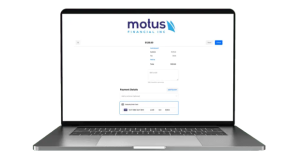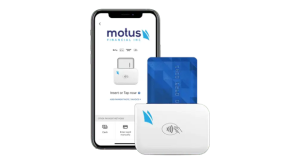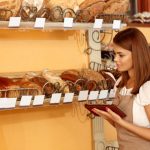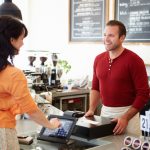3 Effective Ways to Grow Your Bar Sales
The business environment of a bar is dependent on speed. The speed of taking orders; the speed of preparing drinks; the speed at which drinks are delivered—even the speed at which checks are given and money is handled. Speed is key at a bar.
But that’s not all. To improve your sales, your bar staff needs to know how to upsell your top shelf.
Below, we reveal four effective ways of growing your bar sales.
Time Equals Sales
Many bar owners tend to confuse speed with being fast, though, and give a poorer service in exchange. Speed is key, but top-quality service trumps speed. If customers feel neglected, bussers are sloppy, and there is little personal engagement with the bartender, your bar will have a tough time outlasting its competition.
Instead of focusing on being fast, focus on ways to enable a speedy working environment to boost sales. Here are three examples below:
Have a Modern Bar POS System
Take away human error and lag times by upgrading to a modern point-of-sale system. Send orders within seconds of taking them, create bar tabs, and accept multiple payments on the spot. A mobile POS also opens a line of communication between the bar and BOH—a useful feature during happy hours or busy periods.
Invest in Modern Kitchen Equipment
Check out your cocktail menu and purchase kitchen equipment that supports the list. For instance, if your cocktail menu features fresh juices—don’t make your bar staff hand-squeeze the juice; doing this by hand is a wasteful use of time. Invest in a juicer.
If frozen margaritas are listed, industrial blenders will speed up the production (bonus: most have self-cleaning functions), and a commercial glasswasher saves a remarkable amount of time. Your bar team can have clean, sparkling glasses on hand instead of waiting for more glasses to arrive from the BOH.
Having the right equipment to handle these time-consuming tasks helps your bar staff tremendously. Their focus can remain on the guests and making quality cocktails.
Organizational Tools
Speed is the byproduct of an organized setting, so help your bar team get organized. Encourage your bartenders to find their mis en place and stick with it. Additionally, you can invest in certain organizational tools to help them, for instance, a labeling machine. Use the labeler to identify the storage of ingredients, and maintain quality control by printing out expiration dates.
Your bar staff knows best—don’t hesitate to get their feedback. Open the floor to receive suggestions on ways to get more organized behind the bar, and find a solution together.
Make the Right Bar Layout
The perfect layout for a bartender follows the “Bartender’s Cockpit” principals—a behind-the-bar design that is essential for any bartender to work fast and to work well.
The area of a bar cockpit is made up of three concentric circles:
- The first is a tight circle, within arm’s reach of the bartender, and contains essential items for making drinks.
- The second is called a pivot circle and includes liquors and ingredients that are used less often. A bartender needs little movement—a pivot at most—to reach these secondary items.
- The third is one step away from the bar and is where all scarcely used bar items are shelved.
Remember: Time equals money in bartending. Organizing the important items within easy reach allows your bartender to focus on making a great drink, instead of hunting down essential tools.
Train Bartenders to Know Top Shelf
The opportunities for upselling are rampant in a bar setting. When most guests are willing to try something new, it’s opportune to have a bar staff that knows how to introduce top shelf to guests. Oftentimes, bar patrons just need a unique background story and a little convincing to order a new drink.
With the right knowledge, your bar staff can take guests from ordering their “usual” to ordering another “one of those.”
It’s a clear sign that you need to organize a taste-testing session when your top shelf hasn’t been restocked in ages. During the training session, take out your best liquors and explain their flavors and production processes, differences in taste and quality, and the methodology behind their pricing. Go over all the details with your staff, and of course—have them try everything! To upsell, your bar staff needs to understand why top shelf has top price points.
Help your bartenders get into the mindset of a liquor or beer connoisseur, and they will be confident in front of customers. Selling something you understand is simpler than just trying to get someone to spend more.
Avoid Super-Sizing Drinks
There is only one place a super-size cocktail belongs—Miami Beach, Florida. Specifically, any restaurant on Ocean Drive. These ostentatious cocktails can cost upwards of $25, and have two Corona bottles sticking bottoms-up as a design—and alcoholic—feature. But only tourists fall for that trap. No one orders more of a super-sized beverage at a bar unless they’re on vacation.
Remove your super-sized drinks from the cocktail menu and replace them with regular-sized drinks. Not only can you lower the prices—making them more cost-friendly to guests—you will have a bigger budget to source better quality ingredients. Super-sizing drinks might seem like a good sales strategy, but you only take away sales from your bar. Give guests a delicious, top-notch, and satisfyingly-sized cocktail, and they will only want to order more!
To boost sales at your bar, try out these four tried and tested methods!
This article was originally published Sep. 22, 2017 | BY Emma Alois. You can view this blog post in it’s entirety here.




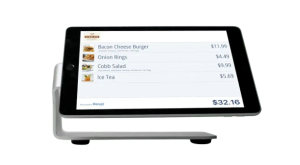 Our POS systems are designed to streamline in-store transactions. With features like inventory management, sales reporting, and customer tracking, our POS solutions help you run your business more efficiently. Our terminals are compatible with various payment methods, including chip cards, contactless payments, and mobile wallets.
Our POS systems are designed to streamline in-store transactions. With features like inventory management, sales reporting, and customer tracking, our POS solutions help you run your business more efficiently. Our terminals are compatible with various payment methods, including chip cards, contactless payments, and mobile wallets.